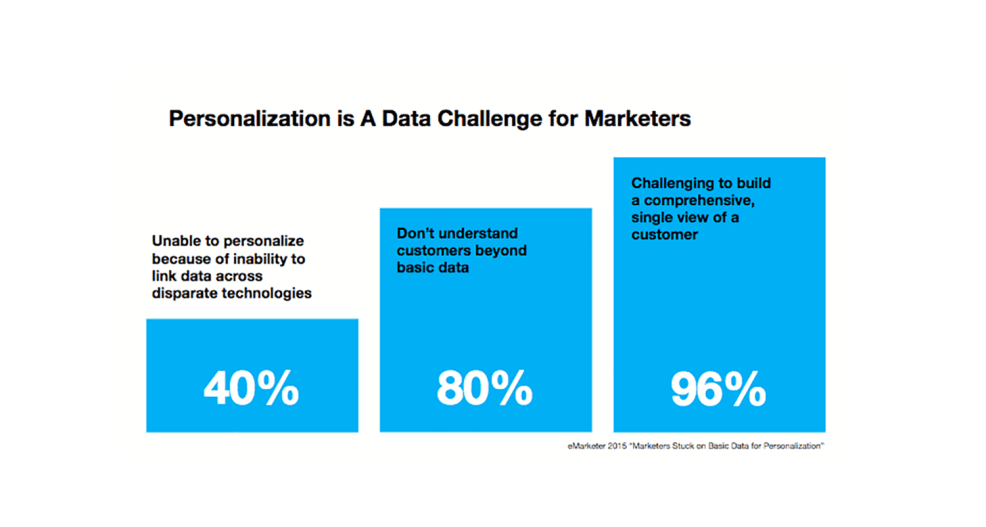
Data - The Driving Force Behind Personalization

Data; the most important aspect of personalization. It’s at the core of everything you do and every personalization flows through it. It’s the first step to any effective personalization strategy and having good data is a requirement to doing personalization well.

But what does “good data” actually mean? There are a couple core tenants of what I consider the right data to use for customer experience. I’m not talking about data in aggregate or Google Analytics here. GA is an excellent website analytics tool that many of our customers use (and some integrate with), but the type of data that can help us deliver a great customer experiences will need to go a level deeper than what GA can provide.
Building a 360 customer profile
True visibility into your visitors requires building unique, holistic user profiles for each individual. And this means a profile that is constantly growing and aggregating customer data in as visitors engage in with your site. A 360 customer profile also requires a few other components.
Discover preferences, not just characteristics
User characteristics, like geolocation, device type, operating system, or new or returning visitor, are critical components to building a 360 customer profile. But behavioral data — actually understanding visitor preferences, specifically around which content they engage with most and like, which product they read most about, or which travel destination they research the most, is that next level of insight that’s required for building a 360 customer profile that allows you deliver the most relevant experience possible to your users.
Integration with your stack (connectors, APIs and so on)
We’ve all seen Scott Brinker’s graphic displaying the enormity of marketing technology available today — and it’s only getting bigger. When thinking about the right data for customer experience, the critical piece is ensuring the data collection technology you use can integrate and connect with other existing tools, and not something that will require a rip and replace or create even more data silos. Additionally, by connecting your website visitor data and segments with other tech sources, you are creating an even more cohesive view of your customers to create that 360 profile I mention above.
Intelligent action
Too often data collection is in service of an existing business goal; from proving out a hypothesis to justifying a business objective or passion project. Instead, allow the data you are collecting, profiles you are building, and segments you are creating to teach you things about your visitors and your business.
Some next-level insights our customers have been able to identify to drive their digital experience forward are:
- A tech company understands which industries visitors are coming from.
- A B2B organization learns which stage of the buying funnel each visitor is at.
- A travel company discovers its most popular travel destinations for its website.
- An insurance company learns which type of plan most visitors are interested in.
- A pharmaceutical company finds out which segment of visitors engages with the most content.
While data is the driving force behind personalization, it’s just one step in the journey to deliver connected customer experiences. Learn the whole process in our blog: Crawl, Walk, Run, a 3 Steps to Personalizing Web Experiences.
